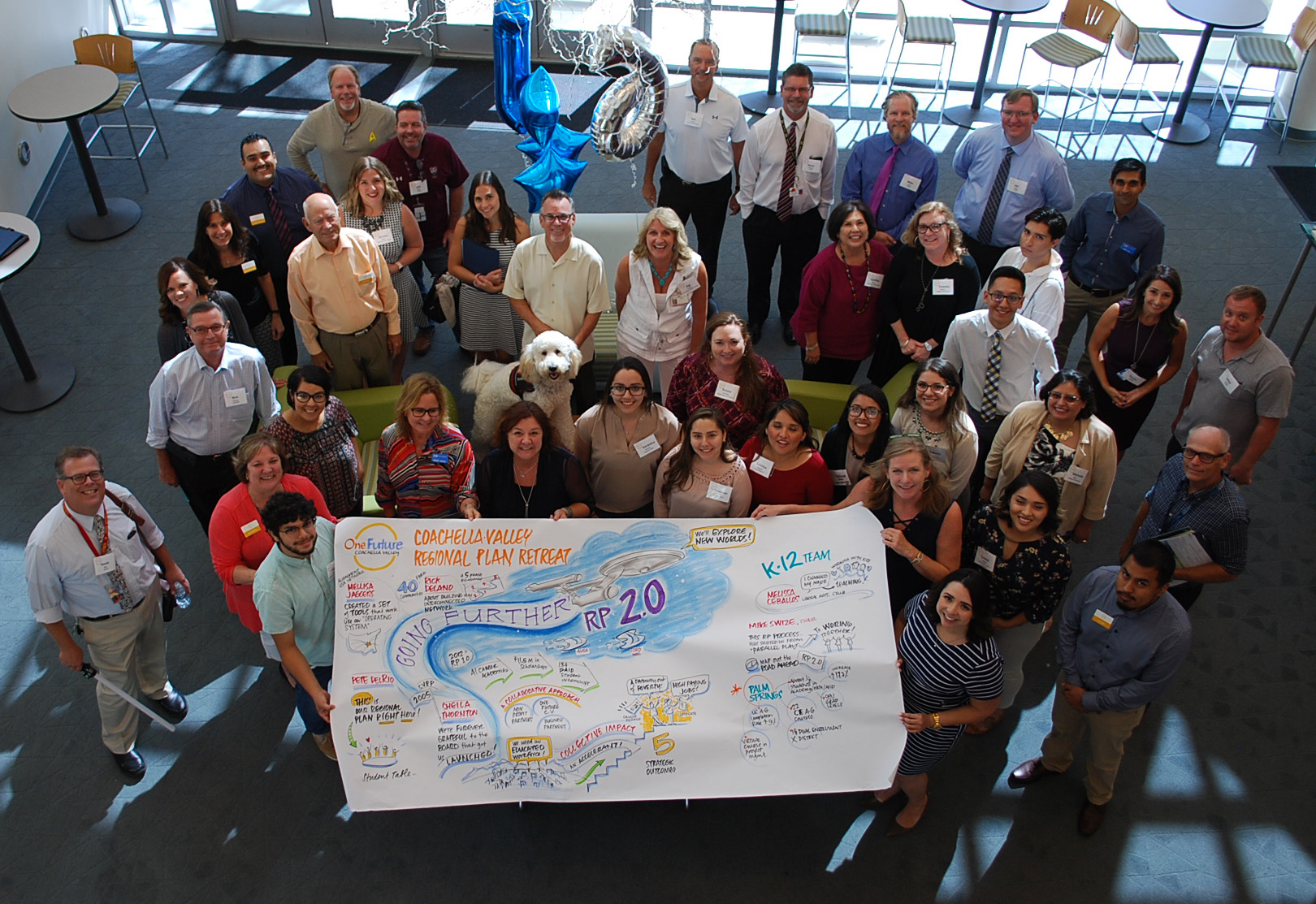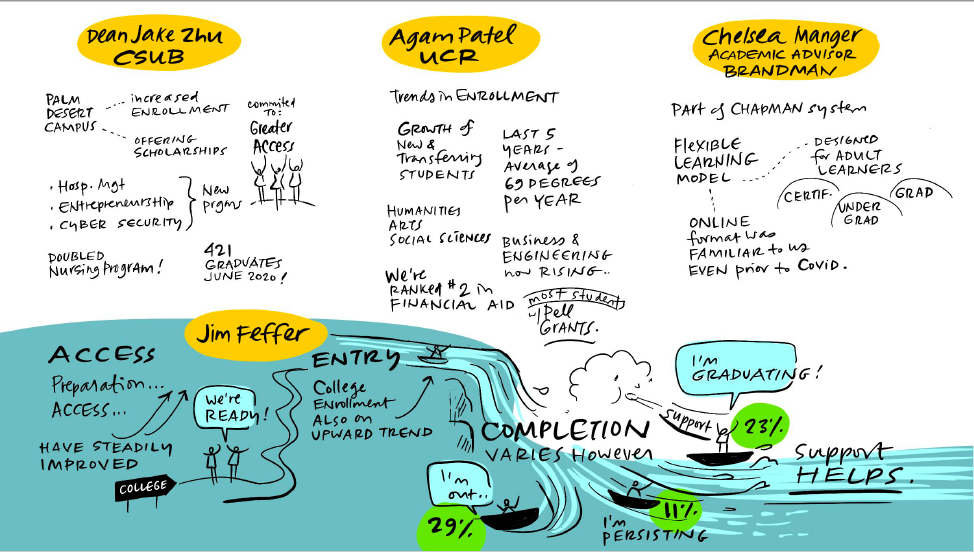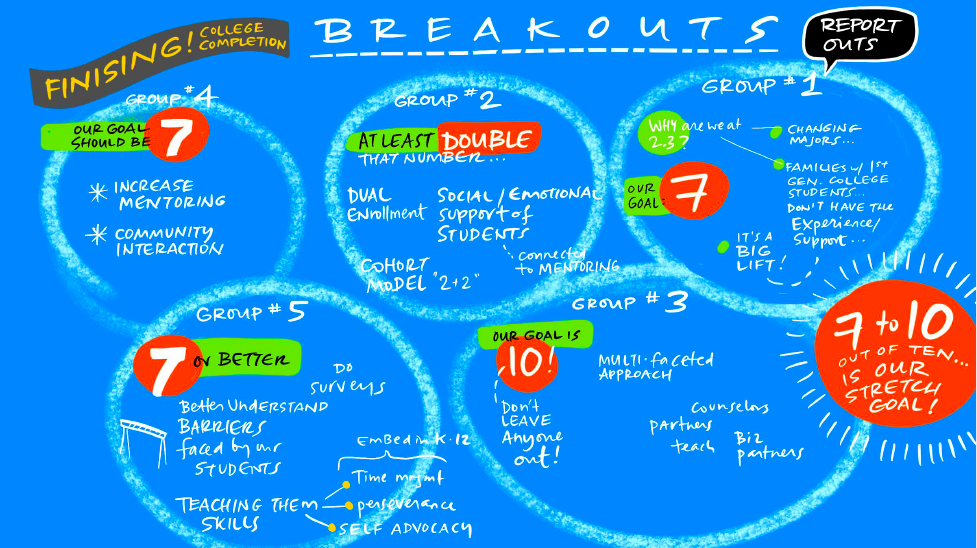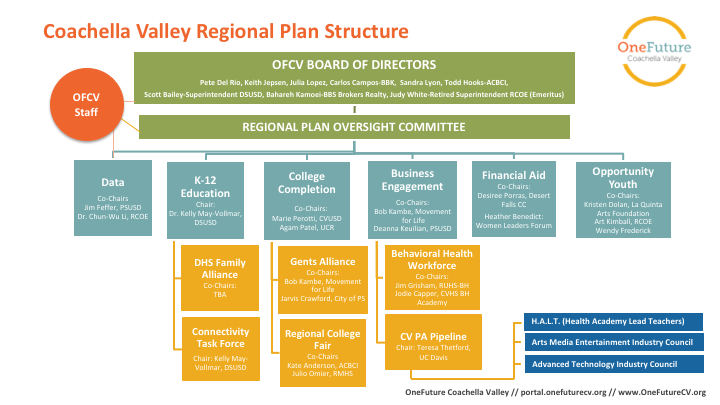
Coachella Valley: Going Further Regional Plan 2.0
BOLD GOAL: 70% College Completion in 6 years!
Regional Plan 2.0 (click to view)
In April 2017, a Design Team comprised of representatives of all three K-12 districts, COD, CSUSB, UCR and business began work, with support from Ford Next Generation Learning (Ford NGL) and Alignment USA, to vision and design a framework for “Regional Plan 2.0” – the renewal of the original Coachella Valley Regional Plan for College and Career Success written and adopted in 2012. The team agreed upon a six strand framework, building upon accomplishments achieved through the original plan.
In September 2017, seventy stakeholders representing K-20 education, foundations, philanthropy, business, government, nonprofits and students, gathered to begin writing Regional Plan 2.0. Four Strand Writing Teams were formed and an initial draft of plan sections were written between October 2017 and May 2018. Draft versions were reviewed and edited by all teams and partners, and a refined plan was adopted by the Regional Plan Oversight Team in November 2019. In January 2020, all partners affirmed that Technology Access and Proficiency must be an overarching focus and a task force was launched to address three goal areas: 1) Universal wifi access/take-home devices for all students; 2) Technology proficiency for all faculty; 3) CS/Coding Programs at every school. By September 2020, these goals had been significantly advanced, a COVID silver lining, and a Connectivity Task Force was established to assure ongoing infrastructure improvements and long-term sustainability for improvements achieved with emergency funding. The Connectivity Task Force's vision is that:
All learners (children, young adults, college students, returning adults) across all education systems in the Coachella Valley have access to exceptional broadband internet that serves their needs from anywhere in the valley 24 hours a day, 7 days a week. There is a valley-wide culture to provide resources that learners need in order to excel across the region. A cross section of institutions, businesses and municipalities collaborate to assure resources are aligned and sustained to secure the economic vitality of the region and are committed to continuity and convergence.
At the September 2020 Regional Plan Retreat, the group also established a bold goal of 70% of students completing a post-secondary degree, credential or certificate within 6-years. 

Career and College: The Linked Learning Approach and College Success
RP 2.0 includes a specific focus on student success across college and career, including emphasis on financial aid capture, regional aligned scholarship giving and an emerging college compact. There is also a focus on rigor and relevance, which links student learning to the world of work. The Linked Learning approach transforms students’ high school experience bringing together strong academics, demanding technical education, and real-world experience that helps students gain an advantage in high school, postsecondary education, and careers. In the Coachella Valley, Linked Learning is delivered through the career academy model. Linked Learning students follow industry-themed pathways in a wide range of fields, and these pathways prepare high school students for career and a full range of post-secondary options, including 2- or 4-year college or university, an apprenticeship, the military, and formal employment training.
An annual Regional Plan 2.0 Retreat is held annually to celebrate progress and set future direction.
Click here to see Alignment Team Descriptions
Coachella Valley's Vision:
All Students will graduate high school prepared for College, Career, and Life.
The regional plan identifies five long-term, strategic outcomes, which are:
1) Increase High School Graduation Rates
2) Increase College Readiness
3) Increase College/Higher Skills Training Completion
4) Increase Career Readiness
5) Local Students in Higher Wage Jobs
The plan also describes specific strategies to advance college and career readiness for all students, including development of personal graduation plans, strengthening counselor collaboration opportunities, improving the high school graduation rate, boosting A-G course completion, building a locally funded endowment for the scholarship program and designing outreach strategies for parents and students beginning as early as middle school.

